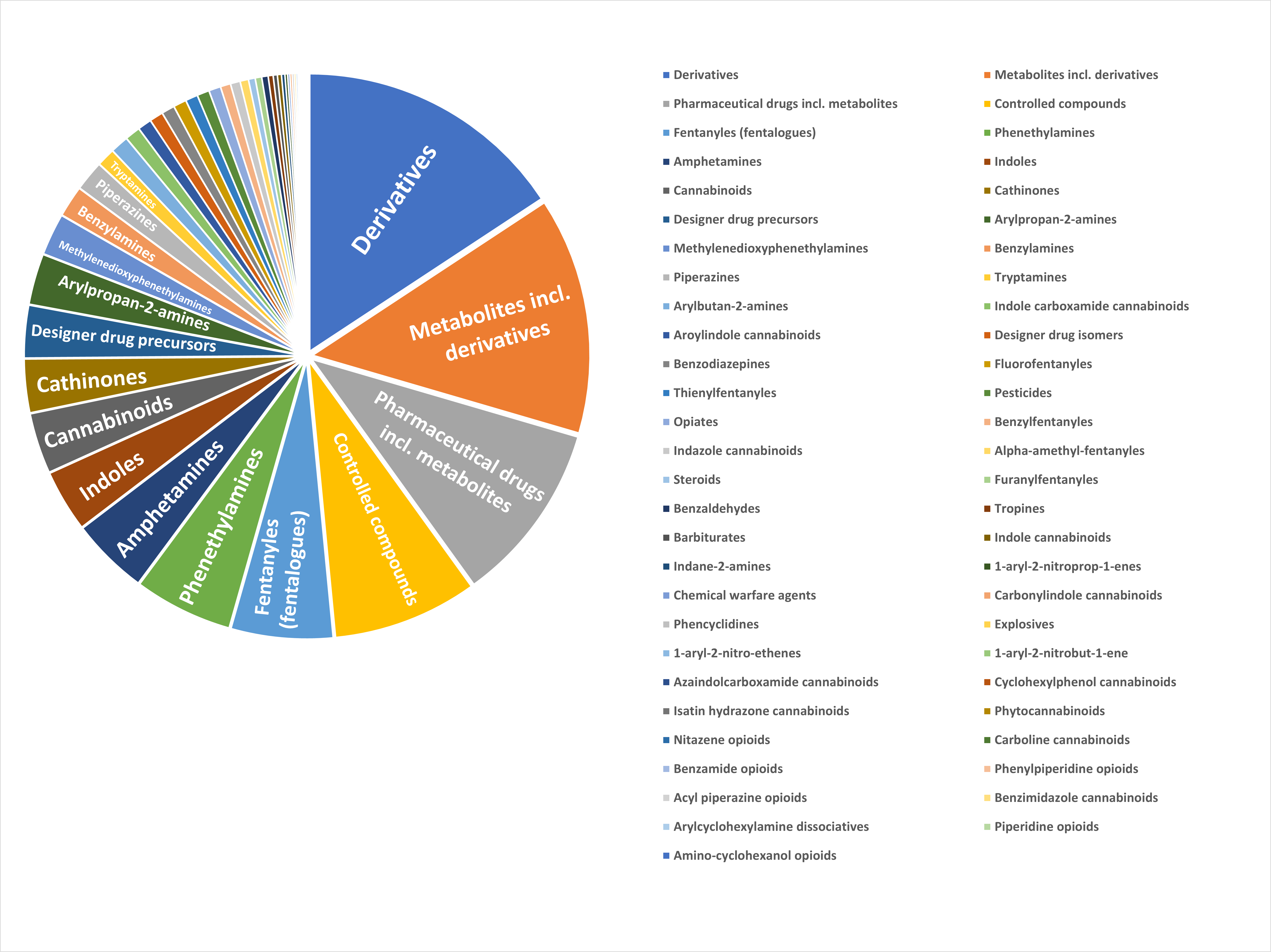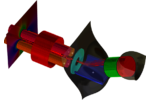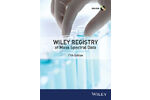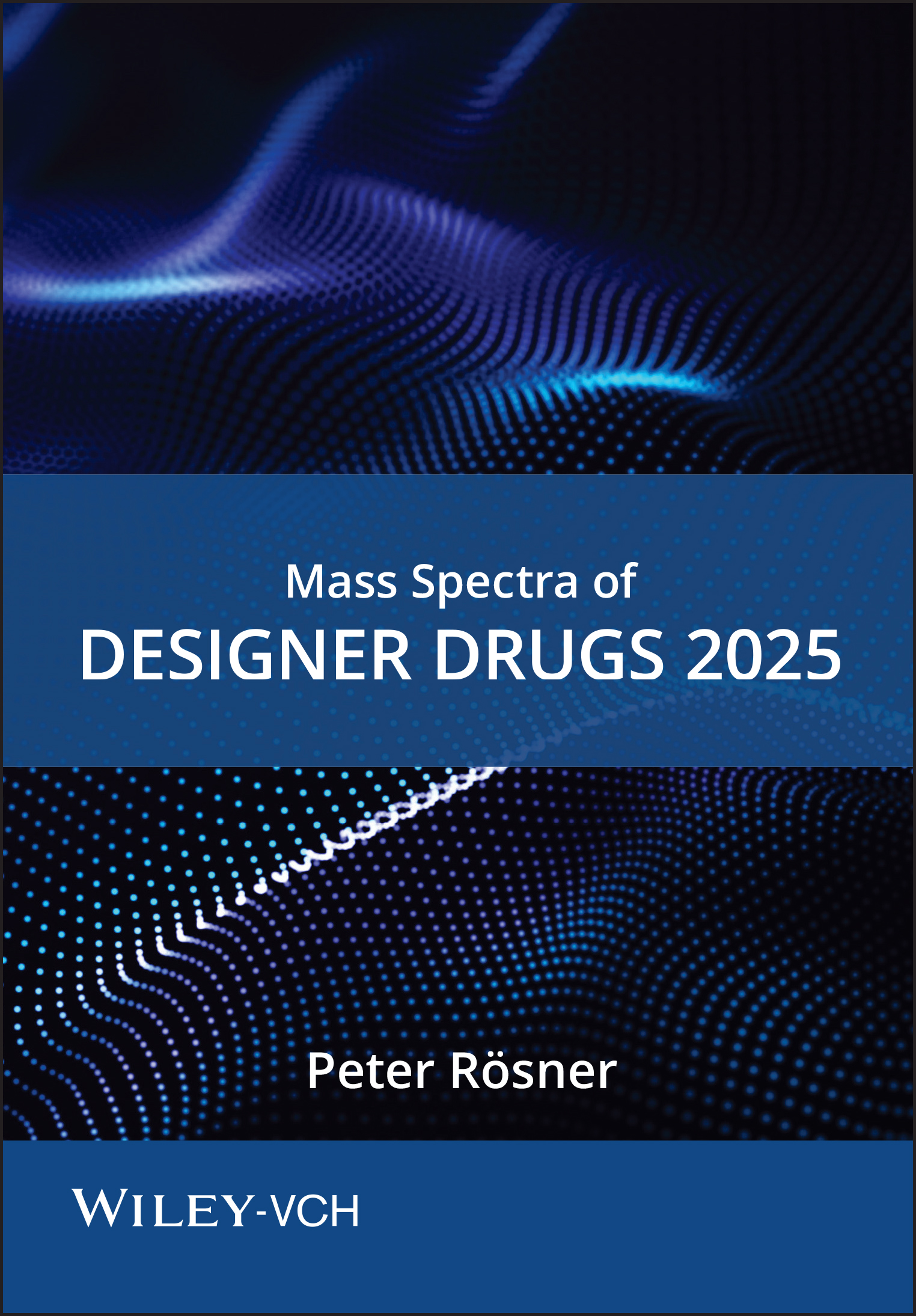Description
2025, by Peter Rösner
Designer drugs are constantly evolving, and in order to keep up, you need access to the most recent spectral data.
Updated annually, Mass Spectra of Designer Drugs remains the most comprehensive MS collection of designer drugs, pharmaceuticals, chemical warfare agents, and related substances. That's why forensic, clinical, and toxicological laboratories throughout the globe rely on this comprehensive high-quality spectral database to identify illicit substances fast.
This GC mass spectral library includes 36,360 mass spectra of 27,500 unique chemical compounds, including novel psychoactive substances, with detailed information and chemical structures for each entry. It includes data from both legal and underground literature, providing the most comprehensive picture of these compounds. Data are carefully compiled in cooperation with the Regional Departments of Criminal Investigation and other partners worldwide. As far as possible, spectra were verified by standard mass spectra libraries and checked by mass spectral interpretations.
The 2025 release features the addition of over 1,260 new mass spectra and over 780 new, unique compounds in classification groups such as fentanyles, various opioids, synthetic cannabinoids, and many more. Updated annually, this release covers designer drugs and related substances up to December 31, 2024.
Applications: This mass spectral library is a critical and essential resource for analytical chemists in forensic, clinical, and toxicological laboratories who support law enforcement authorities with their services. It’s used in both local and federal crime labs, medical examiner’s offices, border control, and just about anywhere forensic analysis takes place.
Specifications
- Mass Spectra: 36,360 (with chemical structures)
- Unique Compounds: 27,500
- Measured Kovats Indices: 22,444
- Average Quality Index/Spectrum (QI): 965
- Opiates: 379
- Fentanyls/Fentalogues: 3,439
- Cannabinoids: 2,114
- Controlled Compounds:
- Schedule I: 1,284
- Schedule II: 128
- Schedule III: 285
- Schedule IV: 87
- Schedule V: 6
This mass spectral library is the most comprehensive of its kind and includes pharmaceutical, street drugs, and even related compounds like pesticides.
In this collection, you’ll find designer drugs and their isomers, precursors, derivatives, and metabolites, including androgens, cannabinoids, controlled compounds, depressants, hallucinogens, narcotics, piperazines, psychedelics, sedatives, and stimulants such as:
- Fentanyl and fentalogues
- Opioids
- Amphetamines
- Methylenedioxyphenethylamines
- Phenethylamines
- Indoles
- Cathinones
- Tryptamines
- Benzodiazepines
- Tropines
- Barbiturates
- Steroids

2023 compounds
Contents and Compound Classes
| Class\Edition | 2025 | 2024 | 2023 | 2022 | 2021 | 2020 | 2019 | 2018 | 2017 | 2016 | 2015 | 2014 | 2013 | 2012 | 2011 | 2010 | 2009 | 2008 | 2007 | 2006 | 2005 |
|---|---|---|---|---|---|---|---|---|---|---|---|---|---|---|---|---|---|---|---|---|---|
| Total Compounds: | 27500 | 26712 | 26195 | 25343 | 23879 | 22317 | 21649 | 20381 | * | 18823 | 16877 | 16343 | 15556 | 13420 | * | 10450 | 9436 | 8300 | 6029 | 4694 | 2959 |
| Total Spectra: | 36360 | 35094 | 34209 | 32855 | 31169 | 29371 | 28032 | 26459 | * | 23477 | 21013 | 20296 | 19037 | 16178 | * | 12312 | 11011 | 9658 | 7006 | 5531 | 3437 |
| Experimental Kovats indices: | 22444 | 22057 | 21923 | 21335 | 20102 | 18793 | 18017 | 17114 | 12728 | 12175 | 11,061 | 8607 | * | 5866 | 4957 | 3892 | 2159 | ||||
| Average peaks per spectrum: | * | * | * | * | 174.3 | 172.4 | 169.5 | 162.4 | * | 161 | 160 | 156 | 152 | ||||||||
| Average Quality Index: | 965 | 965 | 964 | 960 | 955.6 | 950.0 | * | * | 945.5 | 943 | 942.4 | 940.5 | 935.7 | * | 938 | 932 | 930 | 925 |
(* not recorded)
Supported Formats
Compatible with:
- Agilent ChemStation/MassHunter/PCD (.L), OpenLab (NIST MS Search)
- NIST MS Search
- PerkinElmer TurboMass (NIST MS Search)
- Thermo Xcalibur. TraceFinder/Chromeleon/Compound Discoverer (NIST MS Search)
- Waters MassLynx (NIST MS Search)
- Bruker MS Workstation (NIST MS Search)
- Chromatec Analytic (NIST MS Search)
- Leco ChromaTOF,
- JEOL msFineAnalysis,
- Scion MS Workstation
- (does not include Shimadzu)
USB drive shipped.
About the Authors
Author Peter Rösner studied chemistry, pharmacology, and toxicology at the University of Kiel. In 1982, he joined the regional department of criminal investigation in Kiel and became the leader of the toxicology department, focusing on drug identification and structure elucidation with GC/MS. Since 1992, he has been a lecturer in mass spectrometry at the University of Kiel. Dr. Rösner received the Jean-Servais-Stas Award from the Society of Toxicological and Forensic Chemistry on April 15, 2005 in honor of his outstanding work on daughter ion mass spectroscopy and mass spectral databases.
See Also
Combatting Designer Drugs Head On (remote), Chemistry Views, May 2012, Sewall"Before a mass spectrum of a compound enters Mass Spectra of Designer Drugs, it is examined by at least three experienced mass spectrometrists skilled in mass spectral interpretations. Any single electron ionization mass spectrum additionally passes through an incorruptible computerized process. This digital evaluation process ends with the calculation of Quality Index for Reference Mass developed by Professor Fred W. McLafferty. This quality index (QI) is a numerical value between 0 and 1000 and the product of seven quality factors. In only rare cases such as ion trap spectra, metabolites, very compact molecules, or an uncommon substance-specific fragmentation, are spectra with a quality index below 900 accepted."
| Designer Drugs 2025, USB | ||||
| Part No. | License | Quantity In Stock |
Price EA |
Order |
|---|---|---|---|---|
| 9783527353927 | New | 0*Standard lead-time for non-stock items is approximately two weeks depending on the item. | $7638.00 | |
| 9783527353910 | Upgrade | DISCONTINUED | --- | --- |
|
* Standard lead-time for non-stock items is approximately two weeks depending on the item. † Call for availability. | ||||
|
|
||||
ISBN: 978-3-527-35390-3 (2024), 978-3-527-35393-4 (2024 upgrade), 978-3-527-35288-3 (2023), 978-3-527-35287-6 (2023 upgrade), 978-3-527-35078-0 (2022), 978-3-527-35079-7 (2022 upgrade), 978-3-527-35006-3 (2021), 978-3-527-35007-0 (2021 upgrade), 978-3-527-34813-8 (2020), 978-3-527-34814-5 (2020 upgrade), 978-3-527-34685-1 (2019), 978-3-527-34684-4 (2019 upgrade), 978-3-527-34527-4 (2018), 978-3-527-34528-1 (2018 upgrade), 978-3-527-34379-9 (2017), 978-3-527-34380-5 (2017 upgrade), 978-3-527-34208-2 (2016), 978-3-527-34209-9 (2016 upgrade), 978-3-527-33982-2 (2015), 978-3-527-33983-9 (2015 upgrade), 978-3-527-33795-8 (2014), 978-3-527-33796-5 (2014 upgrade), 978-3-527-33400-1 (2013), 978-3-527-33401-8 (2013 upgrade), 978-3-527-33332-5 (2012), 978-3-527-33333-2 (2012 upgrade), 978-3-527-32833-8 (2011), 978-3-527-32834-5 (2011 upgrade), 978-3-527-32725-6 (2010), 978-3-527-32726-3 (2010 upgrade), 978-3-527-32392-0 (2009), 978-3-527-32393-7 (2009 upgrade), 978-3-527-31899-5 (2008), 978-3-527-31979-4 (2007), 978-3-527-31980-0 (2007 Upgrade), 9783527321476 (2007 CD-ROM+Print).





